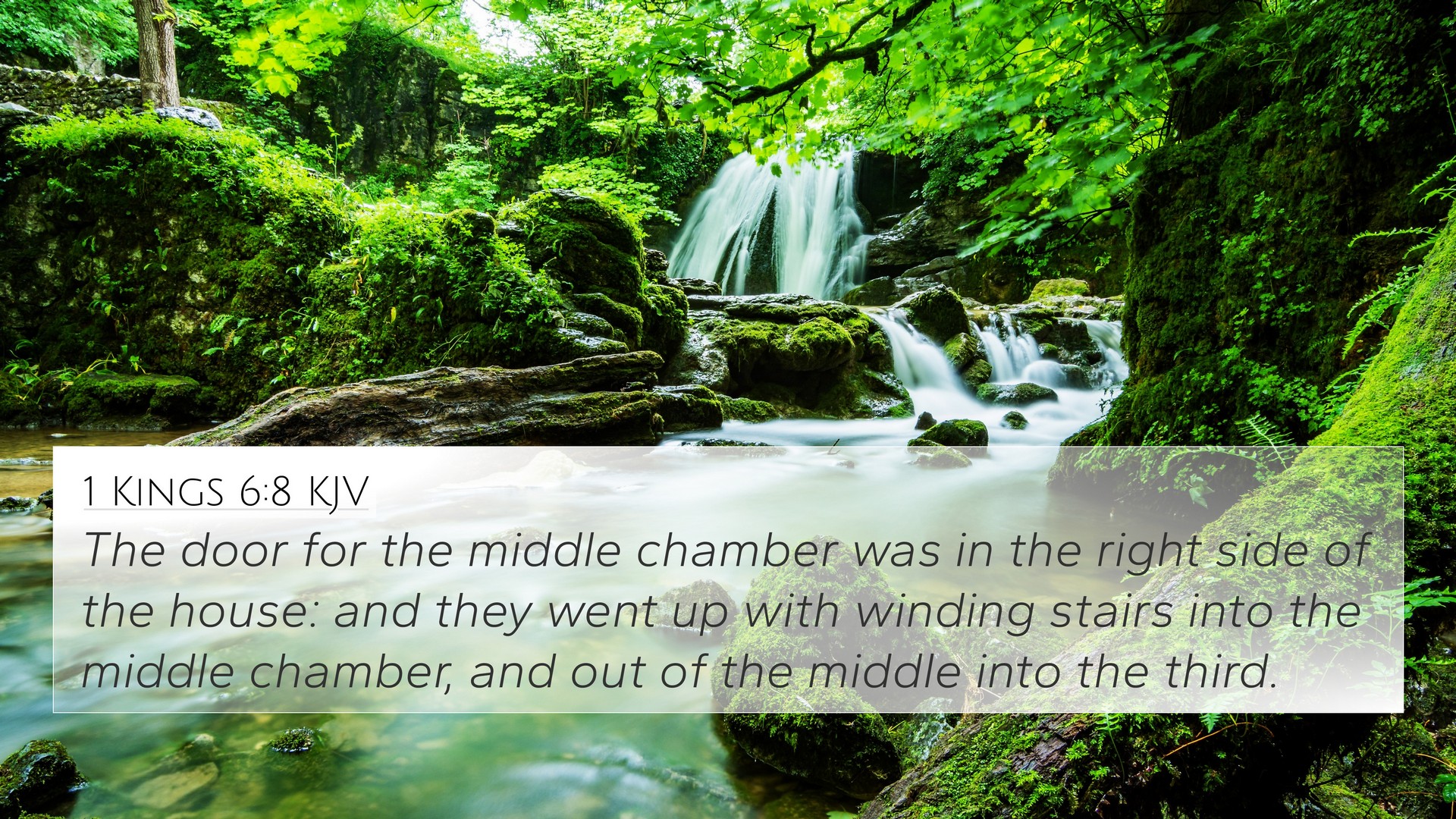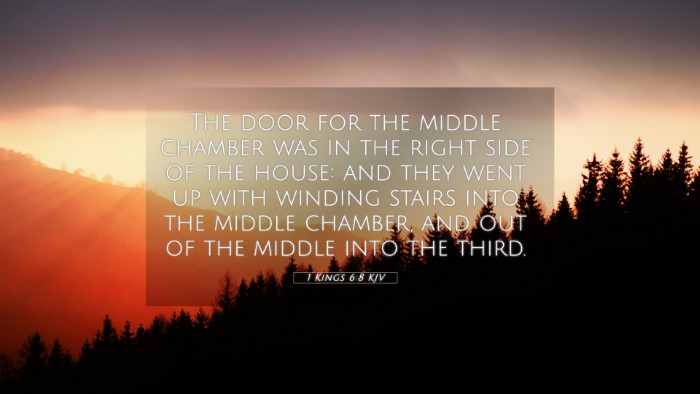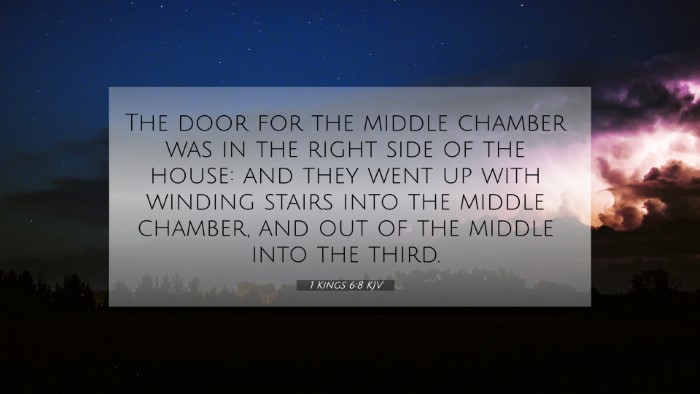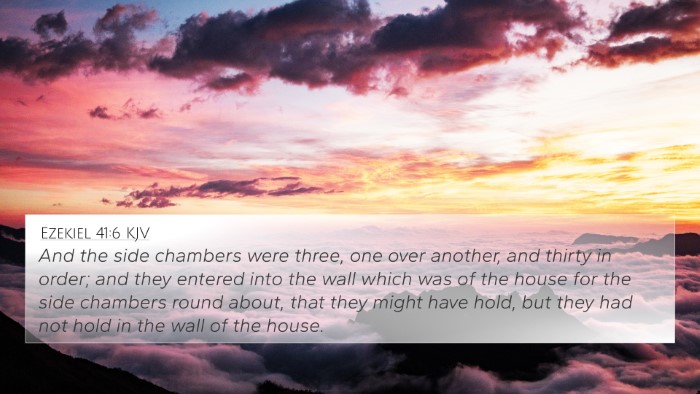Understanding 1 Kings 6:8
Bible Verse: 1 Kings 6:8 - "The entrance for the lowest chamber was on the right side of the house: and they went up with winding stairs into the middle chamber, and out of the middle into the third."
Summary of the Verse Meaning
This verse describes architectural details of Solomon's Temple, particularly the arrangement of chambers within it. The specifics of the chambers' entrances and the design of the stairs illustrate the meticulous planning involved in constructing the Temple, which reflects God’s glory and the significance of worship. Key insights can be drawn from public domain commentaries to provide a deeper understanding.
Insights from Public Domain Commentaries
-
Matthew Henry:
Henry emphasizes the significance of the Temple as a place of worship and how the intricacies in its construction reflect God's order. He suggests that the winding stairs symbolize the journey towards spiritual understanding and elevation towards God.
-
Albert Barnes:
Barnes notes that the mention of the "entrance for the lowest chamber" indicates a practical architectural design aimed at maximizing space and utility. He points out that the description serves to affirm Solomon's wisdom and foresight in constructing a culturally significant site.
-
Adam Clarke:
Clarke elaborates on the physical structure, highlighting the engineering brilliance involved in the multi-level design. He relates this to themes of divine inspiration behind the Temple’s construction and the importance of sacred spaces in ancient Israel.
Bible Cross-References
This verse can be cross-referenced with the following scriptures to enhance understanding and discover connections between Bible verses:
- 2 Chronicles 3:1: Details the beginning of temple construction, providing context to Solomon's architectural endeavors.
- 1 Kings 6:2: Describes the grandeur of the Temple, establishing its importance in Israel's religious life.
- Exodus 25:8-9: God instructs Moses on building the Tabernacle; a precursor to the permanent Temple.
- Psalm 84:1-2: Expresses the psalmist's longing for God's dwelling place, connecting to the Temple's spiritual significance.
- Matthew 12:6: Jesus refers to being greater than the Temple, highlighting the shift from physical to spiritual worship.
- Hebrews 9:1-2: Discusses the Old Covenant arrangement and its tabernacle, relating to the significance of sacred space.
- John 2:19: Jesus speaks of destroying the Temple and raising it in three days, alluding to His own body as the new temple.
Thematic Connections
The themes reflected in 1 Kings 6:8 resonate through the entire Bible, creating layers of understanding through cross-references. The construction of the Temple not only signifies a physical house for God but also sets a precedent for spiritual living:
-
Integration of Old and New Testament:
This verse reveals connections between the Old Testament’s physical Temple and the New Testament’s spiritual implications, embodied in Christ.
-
Symbolism of the Stairs:
The winding stairs signify the ascent in spiritual understanding and the importance of climbing towards holiness.
-
Role of Worship:
As a sacred site, the Temple serves a continuing role in understanding how worship ought to be situated in our lives.
Conclusion
1 Kings 6:8 is more than an architectural description; it encapsulates themes of divine order, spiritual ascent, and the significance of worship throughout biblical history. By exploring cross-references, one can dive deeper into the textual connections that illustrate the overarching narrative of God's relationship with humanity.
FAQs about Cross-referencing Bible Verses
- How to find cross-references in the Bible? Utilize tools such as Bible concordances or cross-reference guides to identify links between scriptures.
- What are some methods for cross-referencing Bible verses? Comparative Bible study and thematic analysis can be effective ways to explore connections.
- Why is cross-referencing important? It helps to enhance understanding, revealing the interconnectedness of Biblical texts.



